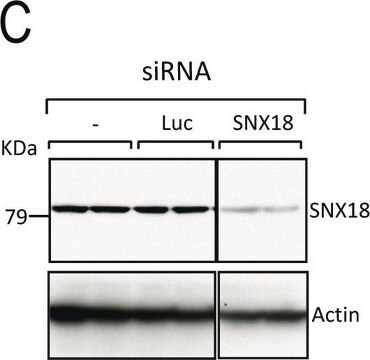SAB4200248
Anti-Actin antibody, Mouse monoclonal
clone MM2/193, purified from hybridoma cell culture
About This Item
biological source
mouse
conjugate
unconjugated
antibody form
purified from hybridoma cell culture
antibody product type
primary antibodies
clone
MM2/193, monoclonal
form
buffered aqueous solution
mol wt
antigen ~42 kDa
species reactivity
mouse, human, rat, canine, monkey
concentration
~1.0 mg/mL
technique(s)
western blot: 1-2 μg/mL using HeLa cell extracts
isotype
IgM
shipped in
dry ice
storage temp.
−20°C
target post-translational modification
unmodified
Gene Information
human ... ACTB(60)
General description
In mammals, actin protein consists of six different isoforms encoded by separate genes. The four isoforms αskeletal-actin, α cardiac-actin, αsmooth-actin and γsmooth-actin are expressed in skeletal, cardiac and smooth muscle. The other two isoforms, β cyto-actin and γ cyto-actin are ubiquitously expressed.
Immunogen
Application
Biochem/physiol Actions
Physical form
Storage and Stability
Other Notes
Disclaimer
Not finding the right product?
Try our Product Selector Tool.
recommended
Storage Class Code
10 - Combustible liquids
Flash Point(F)
Not applicable
Flash Point(C)
Not applicable
Certificates of Analysis (COA)
Search for Certificates of Analysis (COA) by entering the products Lot/Batch Number. Lot and Batch Numbers can be found on a product’s label following the words ‘Lot’ or ‘Batch’.
Already Own This Product?
Find documentation for the products that you have recently purchased in the Document Library.
Customers Also Viewed
Our team of scientists has experience in all areas of research including Life Science, Material Science, Chemical Synthesis, Chromatography, Analytical and many others.
Contact Technical Service
